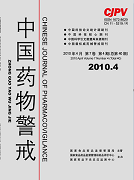|
|
The Study On Hepatotoxicity of Mastic and Myrrha in Rats
TAN Ying, XU Xin, ZHOU Kun, HE Jian, QU Cai-qin, GAO Xiu-mei
2010, 7(4):
193-195.
Objective To compare the mixture of Olibanum and Myrrha and their different extracts, so as to investigate the hepatotoxicity in rats. Methods Wistar rats were administered intragastrically for 12 weeks with Olibanum+ Myrrha crude powder, volatile oil, aqueous extract, volatile oil+aqueous extract(3g/kg) and distilled water(control group). After the end of last administration, rats were anesthesia by chloral hydrate after fasting for 12 hours. Blood was taken from abdominal aorta and blood biochemistry indices were determined. The Liver was weighted and liver coefficient was calculated, and Malondialchehyche(SOD) and Superoxide Dismutase(SOD) was tested in liver tissue also. The pathologically examination for the liver was performed with light microscopt. Results Total cholesterd(TC) in group of Olibanum+ Myrrha crude powder, aqueous extract, volatile oil+aqueous extract, were higher than that of the control group(P<0.01). Albumin(ALB) in group of Olibanum+ Myrrha crude powder, volatile oil+aqueous extract, were higher than that of the control group(P<0.05). Compared with the control group, Liver coefficient index in group of Olibanum+Myrrha crude powder, aqueous extract, volatile oil+ aqueous extract were increased significantly(P<0.01), while liver coefficient index in volatile oil group remained unchanged significantly. Malondial-dehyde(MDA) in liver tissue of the treatment group animals except volatile oil were higher than that of the control group(P<0.005~0.01).Liver histopathological examination showed that the rats of the treatment group except volatile oil were suffered from various degrees of vacuolar degeneration. Conclusion Rats in group of Olibanum and Myrrha, aqueous extract, volatile oil and aqueous extract were observed liver damage at various degrees which maybe concerned with higher oxidative stress, while no significant effect in group of volatile oil.
References |
Related Articles |
Metrics
|
